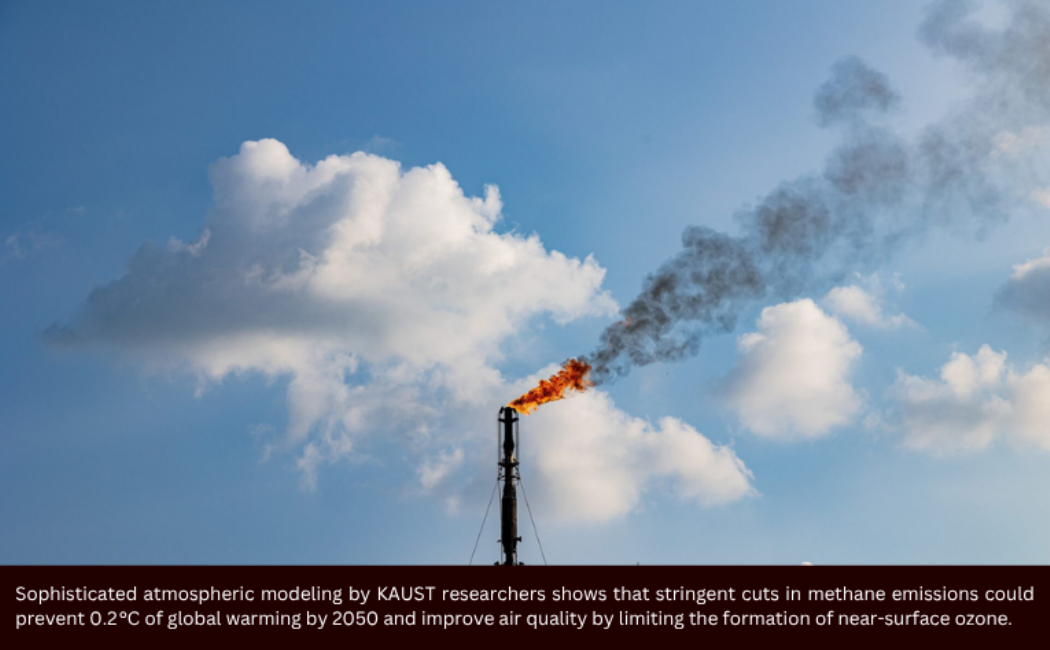

LATEST
NEWS

19 June, 2025
Swift action to curb methane emissions could rapidly bring down the rate of global warming, modeling shows.
Meaningful cuts to global warming could be quickly achieved by implementing readily achievable measures to reduce methane emissions, a KAUST computational modeling study has shown.
Interventions include fixing leaks of the potent greenhouse gas from natural gas extraction facilities and landfill sites that would not only slow warming but also enhance air quality, bringing cascading benefits to health and the environment.
Global methane emissions are modest compared to those of carbon dioxide, but each ton of methane in the atmosphere traps tens of times more heat than a ton of CO2. Today, methane causes about 30 percent of global warming, and its emissions have been rising rapidly.
There is some global traction on reducing methane emissions. Since 2021, more than 150 countries have signed up to the Global Methane Pledge (GMP), which targets anthropogenic methane emission reductions of at least 30 percent from 2020 levels by 2030. “The GMP offers a promising strategy to mitigate the accelerating global warming trend,” says study co-lead Evgeniya Predybaylo, a postdoc in the Climate and Livability Initiative at KAUST.
“The easily implemented and cost-effective methane abatement steps promoted by the GMP could buy time to tackle the harder problem of addressing CO2 emissions,” Predybaylo adds. “This motivated us to use numerical modeling to evaluate the climate benefits of the GMP.”
The team conducted its analysis in collaboration with the Max Planck Institute for Chemistry (MPIC), using a coupled chemistry-climate model that was ideally suited to the task. “Our model is among the few capable of simulating the intricate chemical mechanisms in the atmosphere, including methane’s effects on climate and air quality,” Predybaylo says.
Read more at KAUST Discovery.